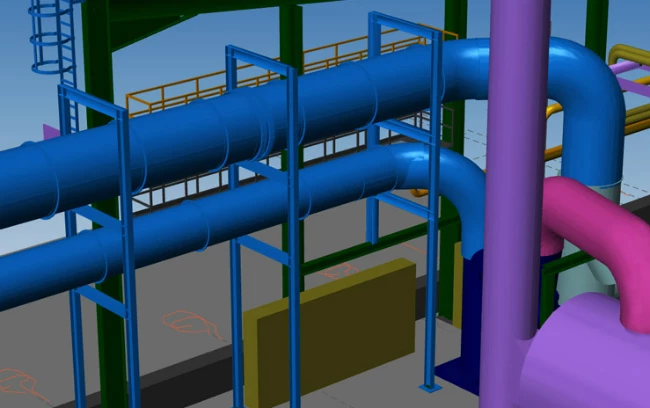
Partner Article
Pipe Support: Its Types, Design And Engineering
Pipe support, considered secondary by many, is a critical component in any piping system. In fact, it is more important to decide on the proper piping support in any piping system to avoid its structural failure. Hence, its type, design and engineering hold the first place in the design of a piping system.
Pipe Support Types:
Pipe supports are basically of two types: primary and secondary.
-
Primary Support: In primary type, the support is attached directly to the pipe. -
Secondary Support: In secondary type, the support is attached directly to the foundation or the structure supporting the pipe.
Classification of Pipe Supports:
Pipe supports are generally classified on the basis of construction and function:
On the basis of construction, they are classified into three types:
- Rigid Support
- Adjustable Support
- Elastic Support
On the basis of their function, they are classified into:
- Loose Support
- Longitudinal Support
- Transverse Support
- Fixed (non-welded type) Support
- Anchor (welded type) Support
- Limit Support
- Special Supports
Parameters Affecting The Selection Of Pipe Support
There are various parameters that needs to be considered for the selection of appropriate pipe support for the piping system:
- Process design conditions
- Pipe material of construction
- Piping Loads including Piping weight, fluid weight etc.
- Insulation material, thickness,density & specification.
- Piping GADs.
- Thermal forces,moments & displacement of Piping
- Occasional loads: Hydro-test loads, Seismic loads, wind loads etc.
Pipe Support Design & Engineering
After the selection of the appropriate pipe support, the next step is the design and engineering of the piping supports. Its design and configuration takes into consideration many factors that includes installation cost, pressure effects, temperature effects, maximum stress and fatigue levels and other factors.
Mentioned below are some of the important points that needs to be considered for the piping support design:
- Objective: The piping supports are designed on the basis of a set objective that it should sustain all the loads and the stresses and should not buckle under any circumstances until it reaches the limit. Hence, they are designed according to the certain ASME standards for proper piping support.
- Identification & tagging: All the pipe supports, be it special or temporary, must be tagged or labeled for identification. This helps in the tracking of supports for design, material take-off (MTO) and procurement. Normally, the organizations involved in piping engineering have set standards for labeling of pipe supports. The tags for support generally include function code, auxiliary code and dimensions.
- Pipe Support Register: After the proper tagging of supports, all the supports must be listed in the design drawings.
- Fabrication Isometrics: All the details of the piping material, pipe support tags, pipe size, quantity, fabrication material and erection material used and other aspects related to piping must be included in the piping fabrication isometrics.
- Support Types & Material: The support type and material must be chosen with utmost care as the piping support are exposed to different types of loads and vibrations, temperature and pressure conditions and natural forces like wind, rain, earthquake etc. Improper use of support types and material may lead to failure.
All these factors combined ensure that the piping support and hence the piping system is designed to perfection. This ultimately helps the oil & gas, petrochemical and other industries to have the smooth operation in terms of the functioning of piping system support.
The author Judith Morrison, works as a piping engineer in Rishabh Engineering. Rishabh Engineering is a multi-disciplinary engineering services company providing engineering services to the clients across industries ranging from oil & gas, petrochemical, process and utility industries.
This was posted in Bdaily's Members' News section by Judith Morrison .








 A year of resilience, growth and collaboration
A year of resilience, growth and collaboration
 Apprenticeships: Lower standards risk safety
Apprenticeships: Lower standards risk safety
 Keeping it reel: Creating video in an authenticity era
Keeping it reel: Creating video in an authenticity era
 Budget: Creating a more vibrant market economy
Budget: Creating a more vibrant market economy
 Celebrating excellence and community support
Celebrating excellence and community support
 The value of nurturing homegrown innovation
The value of nurturing homegrown innovation
 A dynamic, fair and innovative economy
A dynamic, fair and innovative economy
 Navigating the property investment market
Navigating the property investment market
 Have stock markets peaked? Tune out the noise
Have stock markets peaked? Tune out the noise
 Will the Employment Rights Bill cost too much?
Will the Employment Rights Bill cost too much?
 A game-changing move for digital-first innovators
A game-changing move for digital-first innovators
 Confidence the missing ingredient for growth
Confidence the missing ingredient for growth